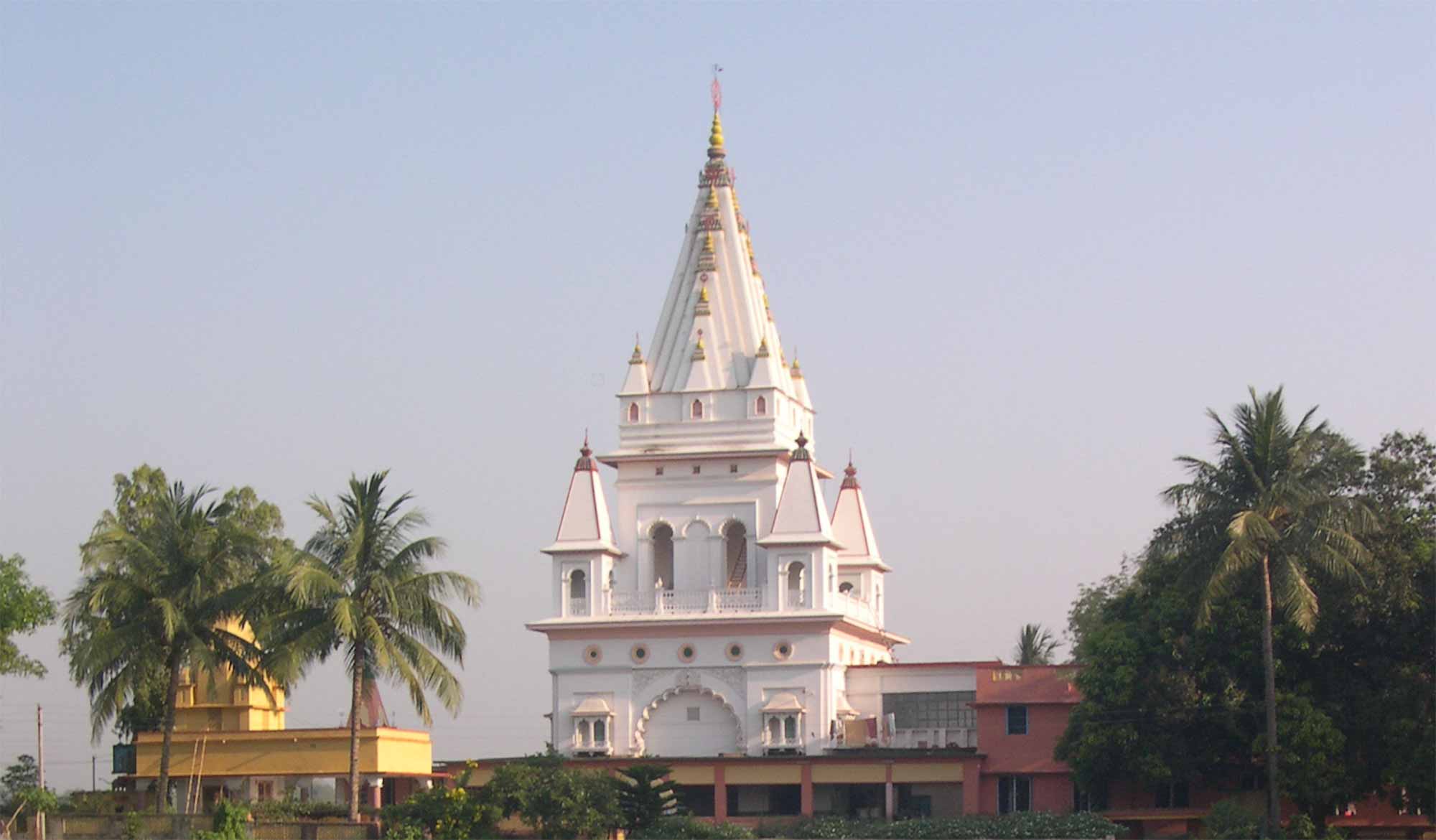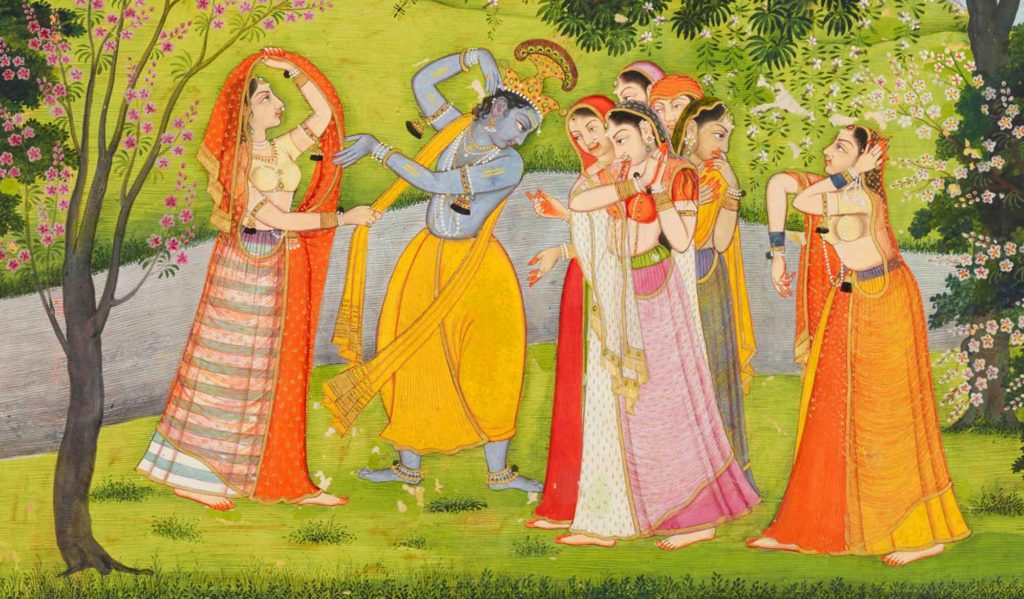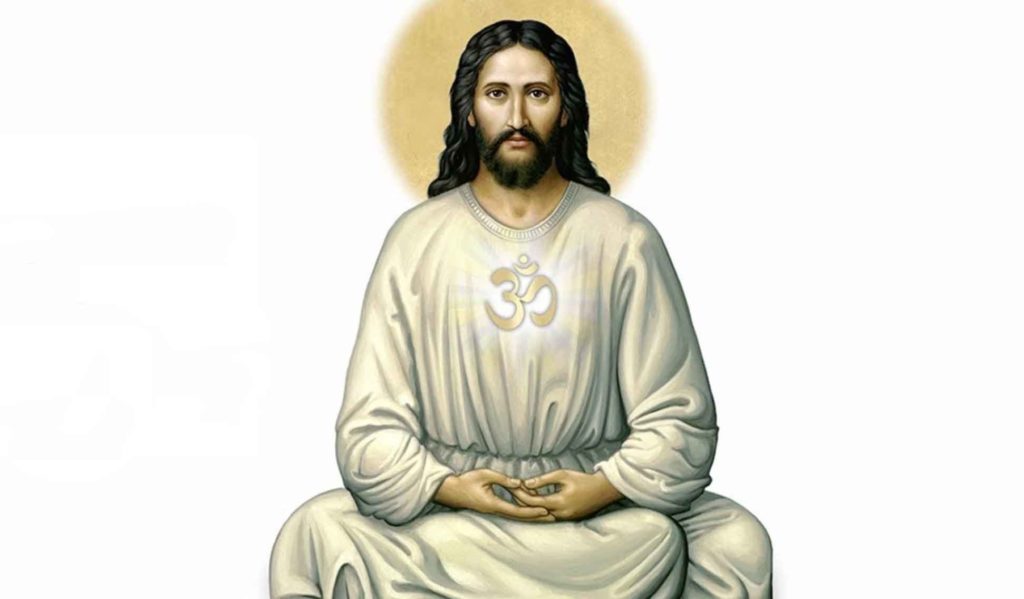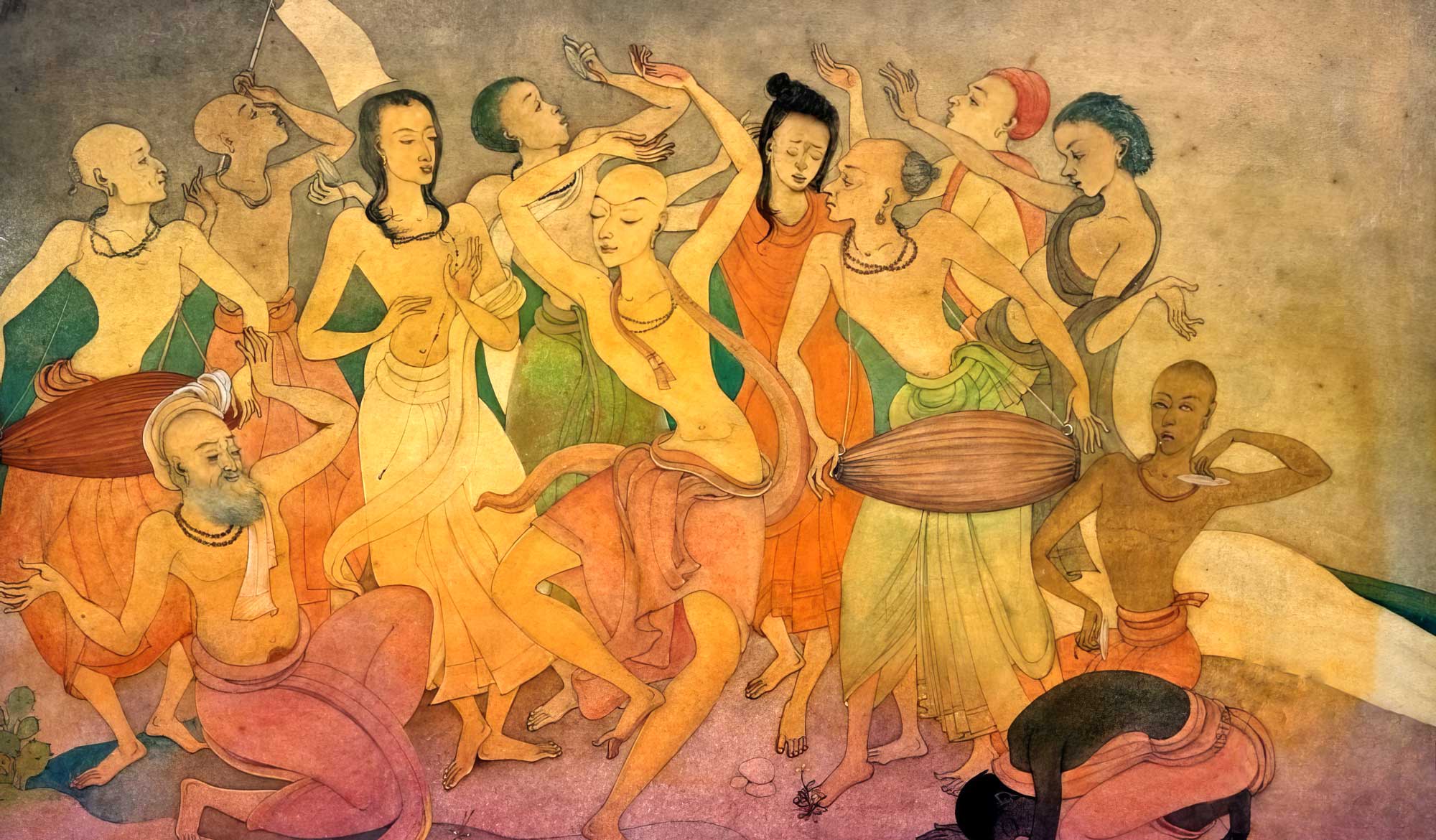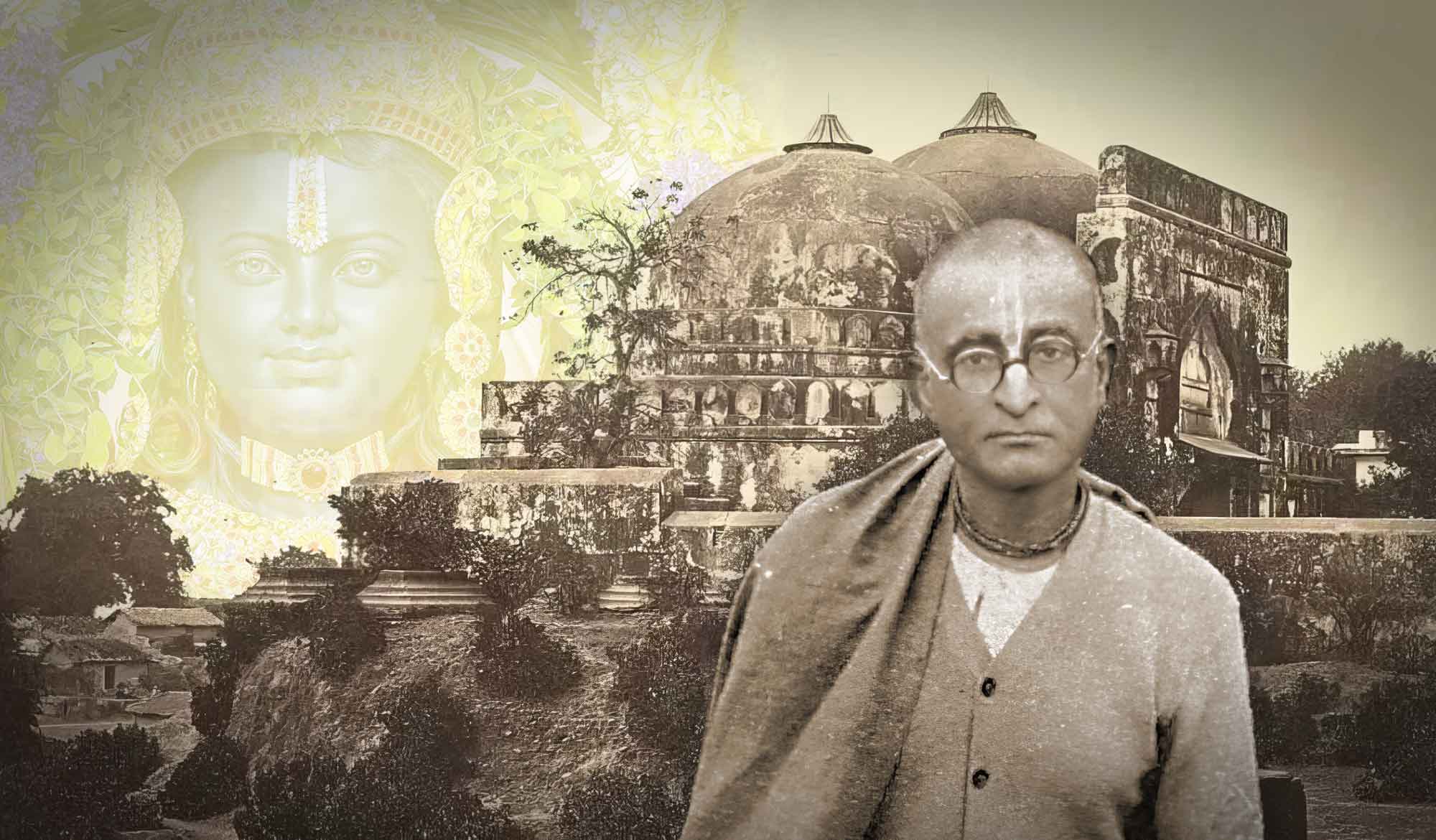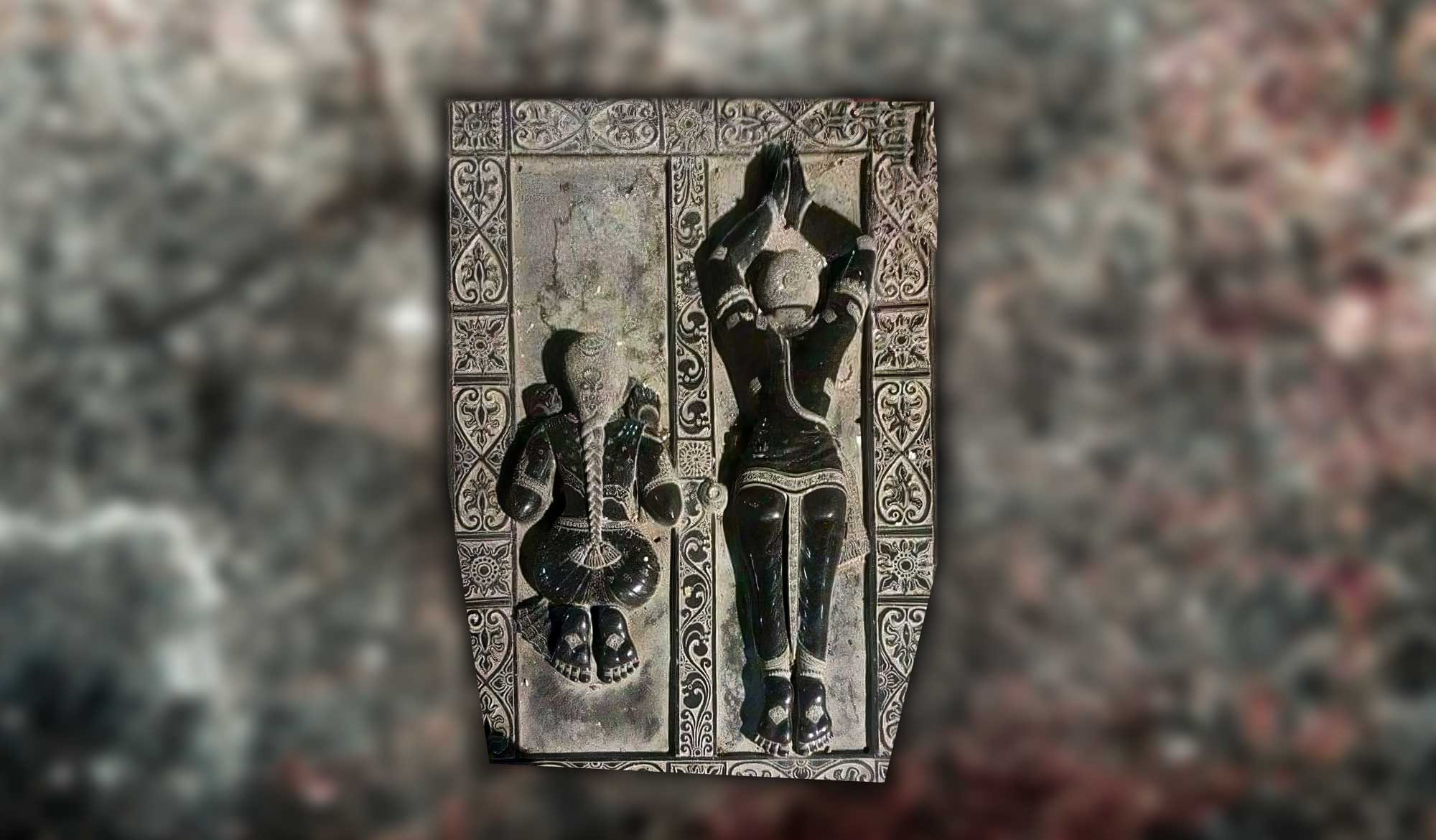Overview
In ‘The Adbhūta Mandira and Bhaktivinoda's Vision’ written in 2005, Śrīla Narasiṅgha Mahārāja gives a detailed narration of how Bhaktivinoda Ṭhākura discovered the Yogapīṭha, the birthplace of Śrī Caitanya. He gives compelling arguments as to why the Yogapīṭha Temple is the actual Adbhūta Mandira predicted by Nityānanda Prabhu, as opposed to the new temple being built by ISKCON.
Question: I have read your articles about the Adbhūta Mandira being built at Yogapīṭha, but I have also seen a video, The New World of Hare Kṛṣṇa, wherein a sannyāsī is standing on the roof of Bhaktivinoda’s house in Godrumadvīpa and he is pointing in the direction of Māyāpura and saying that from there on the roof Bhaktivinoda had a vision of the Adbhūta Mandira. The sannyāsī is indicating that since the ISKCON project is in between Bhaktivinoda’s house and Māyāpura that it must be ISKCON that is going to build the Adbhūta Mandira. Do you have any comment on this?
Swami Narasiṅgha: That is, of course, ISKCON’s misunderstanding. A novel idea, but such thinking was not present in the time of Śrīla Prabhupāda (A.C. Bhaktivedānta Svāmī) nor is it a fact.
In the first place Bhaktivinoda Ṭhākura was not staying in Godrumadvīpa when he had his vision of the Adbhūta Mandira. In fact, Bhaktivinoda’s house at Godruma was not built until two years later. Bhaktivinoda’s house, Svānanda Sukhada Kuñja, was constructed in 1889 whereas his vision of the Adbhūta Mandira occurred in 1887 when he was staying at the Rāṇī Dharmaśāla across the Gaṅgā in Navadvīpa town. The Rāṇī Dharmaśāla is the same place where Gaura-kiśora Dāsa Bābājī used to spend much of his time doing bhajana.
Bhaktivinoda was living and working in government service at Kṛṣṇanagara during those days. He used to come to Navadvīpa on the weekends to try to find out the places of Śrī Caitanya Mahāprabhu’s pastimes. Bhaktivinoda has mentioned that he was especially disappointed in that the residents of Navadvīpa were not very interested in such things (he has specifically mentioned that they only pay heed to their stomachs). It was on one such visit to Navadvīpa when he was staying at the Rāṇī Dharmaśāla that Bhaktivinoda had the vision of the Adbhūta Mandira.
One Saturday evening, Bhaktivinoda was standing on the roof of the dharmaśāla with his son Kamalā Prasāda and a clerk from his office. He was looking in a northerly direction when a brilliant light appeared on the horizon across the Gaṅgā. Within that effulgence appeared the Adbhūta Mandira.
When looking in the northerly direction from the place where Bhaktivinoda was standing the present day ISKCON project does not come into view and even if it did the point to remember is that the vision of the Adbhūta Mandira was specifically revealing the birth site of Śrī Caitanya Mahāprabhu, therefore the Adbhūta Mandira must be built at Yogapīṭha and not just anywhere in Māyāpura.
Bhaktivinoda had the vision of the Adbhūta Mandira on two consecutive occasions. Some years later in a letter to one of his sons Bhaktivinoda detailed the experience of his vision of the Adbhūta Mandira and the events that led to the discovery of Mahāprabhu’s birth site (Yogapīṭha) in Māyāpura. That segment of Bhaktivinoda’s letter follows:
“During the Christmas break I took a train to Navadvīpa with my wife. Arriving there and seeing the land in all four directions the hair on my body stood on end. Upon crossing the Gaṅgā, and I went to Rāṇī Dharmaśāla and I made arrangements to cook for Śrīman Mahāprabhu. Having taken darśana of the Lord with difficultly I honoured prasāda at around 1 o’clock. After 45 days (of dieting), I took grains, jackfruit dahl, banana-flour sabji, and soup etc., which were like nectar. Since my very birth I had not eaten such nectarine food. Even Vimala ate everything on his plate, and with great devotion.
“We had to go to the house at Kṛṣṇanagara before evening and thus, buying some cooking pots and utensils, and quickly crossing (the river), we took the train to Kṛṣṇanagara. The next day I went to Bara Gosvāmī’s house in Śāntipura, took prasāda, and before evening returned home. At that time, I was beginning to become strong. Every Saturday, I went to Navadvīpa to search out the places of the līlā of the Lord, but I did not find many and I was very unhappy. At the present time the people of Navadvīpa only pay heed to their stomach etc. They do not make even a little effort in relation to the places of the līlā of the Lord. One night, Kamalā and a clerk and I went up on the roof in order to look around.
“It was 10 o’clock, and was very dark and cloudy. Across the Gaṅgā, in a northerly direction, I saw a large building flooded with light. I asked Kamalā (if he saw it) and he said he had. I asked the clerk and he said, “I did not see anything.” Because of that I was utterly amazed. In the morning I looked carefully at the place (where I saw the building) from the roof of the Rāṇī Dharmaśāla, and I observed that there was one tāla tree in that location. When I asked others about this place they said that this distant place was known as Ballāl-dīghi and that the remains of the fort etc. of Lakṣmaṇa Sena were close by. That Monday I returned to Kṛṣṇanagara and the following Saturday I went back to Ballāl-dīghi. I saw that wonderful phenomenon in that place again at night, and the next day I went to see the area on foot. Upon inquiring of the elderly people of that place, I was informed that this was the birthplace of Śrīman Mahāprabhu. I gradually saw everything (in the area) and ascertained where all the small villages mentioned in the Caitanya-bhāgavata and in Narahari Ṭhākura’s Bhakti-ratnakara and Parikramā Paddhati were.
“While staying in Kṛṣṇanagara I wrote Śrī Navadvīpa-Dhāma Māhātmya and sent it to Calcutta to be printed. I explained all these matters to Dvarik Babu, an engineer from Kṛṣṇanagara, and through the strength of his intellect understood everything. He made a map of the area around Navadvīpa for me. That also was printed in a reduced form in Dhāma Māhātmya. While I travelled around Navadvīpa-dhāma and wrote Navadvīpa-Dhāma Māhātmya I saw that there was very little opportunity to do more.” (Bhaktivinoda’s letter to Lalitā Prasāda, written 1896)
We have been criticised by some of our friends for making too much of the issue of the Adbhūta Mandira but we see no advantage in distorting the facts, allowing such distortions to flourish or in denying the reality that Bhaktivinoda’s vision was fulfilled by Śrīla Bhaktisiddhānta who constructed the Adbhūta Mandira at Yogapīṭha in 1933 – which is indeed a most wonderful temple.
One devotee from ISKCON has written to suggest that “Couldn’t there be two Adbhūta Mandiras, one at Yogapīṭha and one at ISKCON?” But that would be tantamount to saying, “Couldn’t there be two founder-ācāryas of ISKCON?” – obviously unacceptable! Of course there can be many wonderful temples at Māyāpura and indeed there are, but we should remember that ‘big isn’t always best’- small is beautiful, small is also wonderful. In spiritual life proper conception is everything and the vision of Bhaktivinoda and the conception of Lord Nityānanda, as given in Navadvīpa-Dhāma Māhātmya, is that the Adbhūta Mandira is located at the birth site of Śrī Caitanya Mahāprabhu.
The ISKCON project of late that is being referred to as the Adbhūta Mandira, was originally started by our spiritual master, Śrīla A.C. Bhaktivedānta Svāmī Prabhupāda. Prabhupāda, laid the cornerstone of the temple in 1977. Prabhupāda however never made any reference to his ambitious temple project being the Adbhūta Mandira. In fact, Śrīla Prabhupāda distinctly referred to his project as the Temple of Understanding or the Planetarium. It is only now, within the past decade or so, that some energetic disciples of Prabhupāda have hyped up the ISKCON Planetarium project (for fund raising purposes) by calling it the Adbhūta Mandira. This however has no basis. It is indisputable—the Adbhūta Mandira was constructed at Yogapīṭha in 1933.
Related Articles
- A Rūpānuga’s Constant Meditation Concerning Śrī Ratha Yātrā by Śrīla B.R. Śrīdhara Mahārāja
- Śrī Nimbāditya and Nimbārka Are Not the Same Person by Śrīla Bhakti Prajñāna Keśava Mahārāja
- Ratha Yātrā in Navadvīpa by Śrīla Bhakti Gaurava Narasiṅgha Mahārāja
- A Brief Response to Ratha Yatra in Navadvīpa by Śrīla Bhakti Gaurava Narasiṅgha Mahārāja
- Bhaktivedānta by Śrīla Bhakti Gaurava Narasiṅgha Mahārāja
- Śrīdhara Deva Gosvāmī by Śrīla Bhakti Gaurava Narasiṅgha Mahārāja
- Ativāḍī Apa-Sampradāya by Śrīla Bhakti Gaurava Narasiṅgha Mahārāja
- Hita Harivaṁśa and the Rādhā-Vallabha Sect by Swami B.V. Giri
- The Temple of Understanding by Śrīla Bhakti Gaurava Narasiṅgha Mahārāja
- Māyāpura and the Adbhūta Mandira by Śrīla Bhakti Gaurava Narasiṅgha Mahārāja
- The Adbhūta Mandira and Bhaktivinoda’s Vision by Śrīla Bhakti Gaurava Narasiṅgha Mahārāja
- Nimbārka and Keśava Kāśmīrī by Śrīla Bhakti Gaurava Narasiṅgha Mahārāja
- The Mystery of the History of the Līlā of Dāmodara by Śrīla Bhakti Gaurava Narasiṅgha Mahārāja
- Prabodhānanda and Prakāśānanda by Swami B.V. Giri
Further Reading
- A Discussion in Relation to the Dates of the Six Gosvāmīs by Śrīla Bhaktivinoda Ṭhākura
- Śrī Śrī Rūpa Gosvāmī Prabhu by Śrīla Bhaktivinoda Ṭhākura
- Śrī Śrī Sanātana Gosvāmī Prabhu by Śrīla Bhaktivinoda Ṭhākura
- Śrī Śrī Gopāla Bhaṭṭa Gosvāmī Prabhu by Śrīla Bhaktivinoda Ṭhākura
- Śrī Śrī Jīva Gosvāmī Prabhu by Śrīla Bhaktivinoda Ṭhākura
- Śrī Śrīnivāsa Ācārya Prabhu by Śrīla Bhaktivinoda Ṭhākura
- Śrī Śrī Kṛṣṇa Dāsa Kavirāja Gosvāmī Prabhu by Śrīla Bhaktivinoda Ṭhākura
- Śrī Śrī Prabhu Rāmacandra Gosvāmī by Śrīla Bhaktivinoda Ṭhākura
- Kavi Rāma Prasāda (The Poet Rāma Prasāda) by Śrīla Bhaktivinoda Ṭhākura
- Śrī Śrī Abhirāma Gosvāmī by Śrīla Bhaktivinoda Ṭhākura
- Śrī Parameśvarī Dāsa by Śrīla Bhaktivinoda Ṭhākura
- Śrī Jāhnavā Devī by Śrīla Bhaktivinoda Ṭhākura
- Salve for the Eyes of the Blind by Śrīla Bhaktivinoda Ṭhākura
- Śrī Bhāgavatācārya by Śrīla Bhaktivinoda Ṭhākura
- The Place of Śrīla Bhāgavatācārya by Śrīla Bhaktivinoda Ṭhākura
- The Inauguration of a Prapannāśrama in Amaljoda by Śrīla Bhaktivinoda Ṭhākura
- A Question and Answer Concerning Śrī Kṛṣṇa Saṁhitā (Praśnottara) by Śrīla Bhaktivinoda Ṭhākura
- An Earnest Appeal by Śrīla Bhaktivinoda Ṭhākura
- Śrī Śrī Hari Dāsa Ṭhākura’s Place in Kulīnagrāma by Śrīla Bhaktivinoda Ṭhākura
- The Place of Śrī Nakula Brahmacārī by Śrīla Bhaktivinoda Ṭhākura
- Śrīpāṭa Denuḍa by Śrīla Bhaktivinoda Ṭhākura
- Śrīdhāma Māyāpura by Śrīla Bhaktivinoda Ṭhākura
- Śrī Śyāmānanda Gosvāmī by Śrīla Bhaktivinoda Ṭhākura
- Śrī Māna Sarovara by Śrīla Bhaktivinoda Ṭhākura
- Gata-varṣa (The Last Year) by Śrīla Bhaktivinoda Ṭhākura
- The Temple of Śrī Śrī Jagannāthadeva by Śrīla Bhaktivinoda Ṭhākura
- Nāḍā by Śrīla Bhaktivinoda Ṭhākura
- The Instructions of Śrīmad Rāmānuja Svāmī – the Ācārya of the Śrī Sampradāya by Śrīla Bhaktivinoda Ṭhākura
- Śrīman Nimbāditya by Śrīla Bhaktivinoda Ṭhākura
- Śrī Acyutānanda’s Departure by Śrīla Bhaktivinoda Ṭhākura
- British Rule and the Vaiṣṇavas by Śrīla Bhaktivinoda Ṭhākura
- The Society of Śrī Gaurāṅga by Śrīla Bhaktivinoda Ṭhākura
- The Temple of Jagannath at Puri by Śrīla Bhaktivinoda Ṭhākura
- A Review of the Previous Year by Śrīla Bhaktivinoda Ṭhākura
- Prabodhānanda and Prakāśānanda by Śrīla Bhaktivinoda Ṭhākura
- Rādhā-kuṇḍa and Śyāma-kuṇḍa by Śrīla Bhaktivinoda Ṭhākura
- Puratana Gañja of Śrīdhāma Navadvīpa by Śrīla Bhaktivinoda Ṭhākura
- What Has Happened in Śrī Māyāpura? by Śrīla Bhaktivinoda Ṭhākura
Prema Dhāma Deva Stotram with the Narasiṅgha Sevaka Commentary – Verses 61-65
In verses 61 to 65 of 'Prema Dhāma Deva Stotram', Śrīla Śrīdhara Mahārāja narrates the pastime of Śrī Caitanya at Caṭaka Parvata In Purī and explains how the scriptures produced by Brahmā and Śiva are ultimately searching for the personality of Mahāprabhu who is merciful too all jīvas, no matter what their social position.
Prabhupāda Śrīla Sarasvatī Ṭhākura’s Visit to Ayodhyā
With the forthcoming observance of Śrī Rāma Navamī, we present 'Prabhupāda Śrīla Sarasvatī Ṭhākura’s Visit to Ayodhyā' written by Śrīla Bhaktisiddhānta Sarasvatī Ṭhākura Prabhupāda from The Gaudīyā magazine, Vol 3. Issue 21/ In December 1924, after visiting Benares and Prāyāga, Sarasvatī Ṭhākura visited the birth-site of Śrī Rāmācandra in Ayodhyā.
Śaraṇāgati – The Only Path to Auspiciousness
In this article, 'Śaraṇāgati - The Only Path to Auspiciousness', Dhīra Lalitā Dāsī analyses the process of śaraṇāgati (surrender) beginning with śraddhā (faith). She also discusses the role of śāstra and the Vaiṣṇava in connection with surrender.
Ātma Samīkṣā – The Value of Introspection
In this article, "Ātma Samīkṣā – The Value of Introspection" Kalki Dāsa highlights the importance of introspection in the life of a devotee and especially in relation to the worldly environment that surrounds us. He also explains how transcendental sound influences our capacity to introspect.
Prema Dhāma Deva Stotram with the Narasiṅgha Sevaka Commentary – Verses 61-65
In verses 61 to 65 of 'Prema Dhāma Deva Stotram', Śrīla Śrīdhara Mahārāja narrates the pastime of Śrī Caitanya at Caṭaka Parvata In Purī and explains how the scriptures produced by Brahmā and Śiva are ultimately searching for the personality of Mahāprabhu who is merciful too all jīvas, no matter what their social position.
Prabhupāda Śrīla Sarasvatī Ṭhākura’s Visit to Ayodhyā
With the forthcoming observance of Śrī Rāma Navamī, we present 'Prabhupāda Śrīla Sarasvatī Ṭhākura’s Visit to Ayodhyā' written by Śrīla Bhaktisiddhānta Sarasvatī Ṭhākura Prabhupāda from The Gaudīyā magazine, Vol 3. Issue 21/ In December 1924, after visiting Benares and Prāyāga, Sarasvatī Ṭhākura visited the birth-site of Śrī Rāmācandra in Ayodhyā.
Śaraṇāgati – The Only Path to Auspiciousness
In this article, 'Śaraṇāgati - The Only Path to Auspiciousness', Dhīra Lalitā Dāsī analyses the process of śaraṇāgati (surrender) beginning with śraddhā (faith). She also discusses the role of śāstra and the Vaiṣṇava in connection with surrender.
Ātma Samīkṣā – The Value of Introspection
In this article, "Ātma Samīkṣā – The Value of Introspection" Kalki Dāsa highlights the importance of introspection in the life of a devotee and especially in relation to the worldly environment that surrounds us. He also explains how transcendental sound influences our capacity to introspect.


